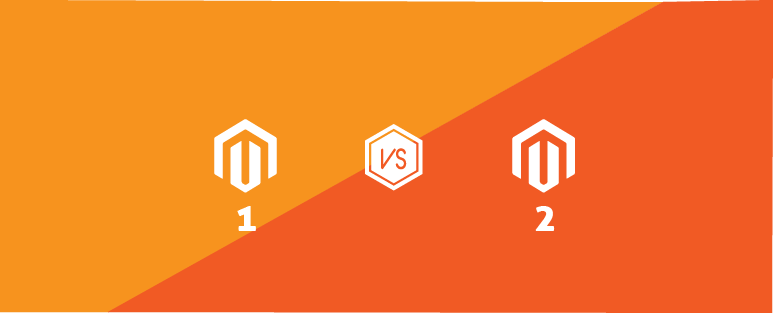5 Reasons Why Magento 2 is Better Than Magento 1
Here you will find 5 Reasons Why Magento 2 is Better Than Magento 1. Don't wait for Magento 1 to stop support. Migrate now!

When you think about starting an online store, you are faced with the problem that there are several eCommerce platforms to choose from. You read articles, blogs, and other papers, but you don’t seem to find a straightforward answer.
Writing an article comparing and contrasting all the available platforms would be overwhelming. So, we will focus on two of the most popular: Magento 2 and Shopify.
To begin with, it is important to know that in spite of the fact that they are both used for creating eCommerce sites, they are actually like apples and oranges, and both require certain skills and knowledge before they can become the useful tools they are.
Perhaps one of the first things everyone looks at is the numbers: pricing, statistics, capabilities, etc. Let’s look at some more closely.
In terms of price, Magento 2 has a free, open-source version, while Shopify is available through a monthly subscription that includes only ten free themes; the rest come at a cost. The open-source version of Magento 2 has many more options in this regard.
When it comes to apps and third-party integration, Shopify charges you for every transaction made through third-party payment gateways, such as PayPal.
Shopify is hosted by the company itself, while the open-source version of Magento 2 requires third-party hosting, the cost of which will depend mostly on the size of your store. Then again, once your store grows to the point where the open-source version of Magento 2 no longer suits your needs, you can upgrade to the paid version, which includes hosting.
Both platforms have excellent customer support. Shopify offers it themselves, while Magento 2 provides all kinds of help through Magento Certified Agencies like IronPlane.
Magento 2 will probably require a longer time to set up the site, develop it, and go live, especially if you’re not familiar with coding, as Magento is PHP-based. But its apps require no coding whatsoever. In the end, it is far more flexible than Shopify. However, if you have no coding experience — or don’t want to deal with coding at all — and the size of your store will not change drastically in the foreseeable future, you may appreciate the drag-and-drop features of Shopify.
Magento may be a bit daunting at first, but all in all will be a better option if you plan for your site to grow. Statistics show that more people decide to use Magento over Shopify despite its being harder to understand, because once you get the knack of it, it proves to be more adaptable to each customer’s needs.
In summary, if you plan to start a small store — your first online store — and keep it small, Shopify may be an option. But if you plan to see your business grow far beyond its starting point, you will definitely be better off with Magento 2.
Give us a call. We will give you the information you need to make this decision.

Here you will find 5 Reasons Why Magento 2 is Better Than Magento 1. Don't wait for Magento 1 to stop support. Migrate now!
 Read More
Read More

What you need to know about Magento 2 hosting. Options for E-commerce companies. Iron Plane Magento Blog.